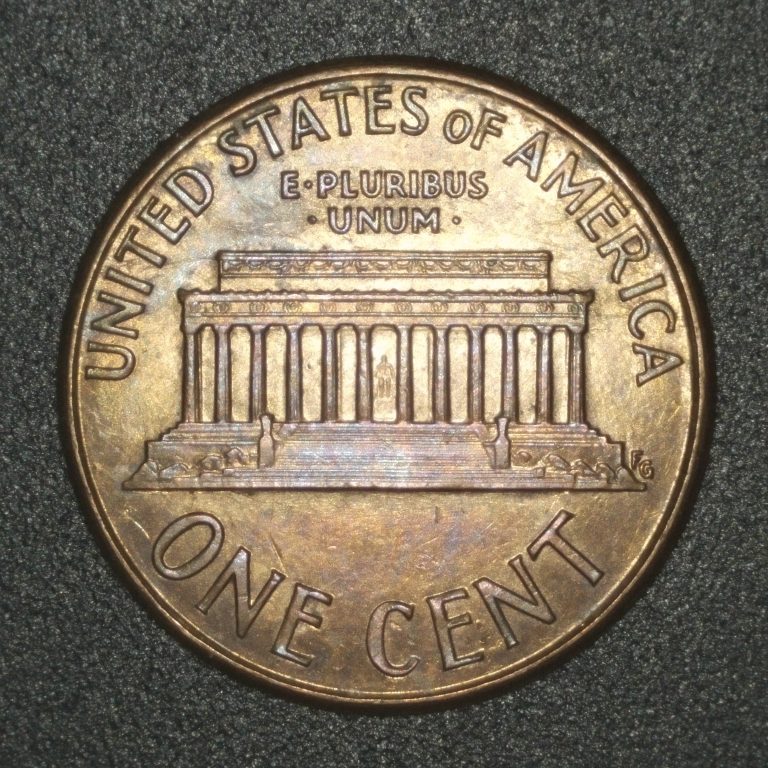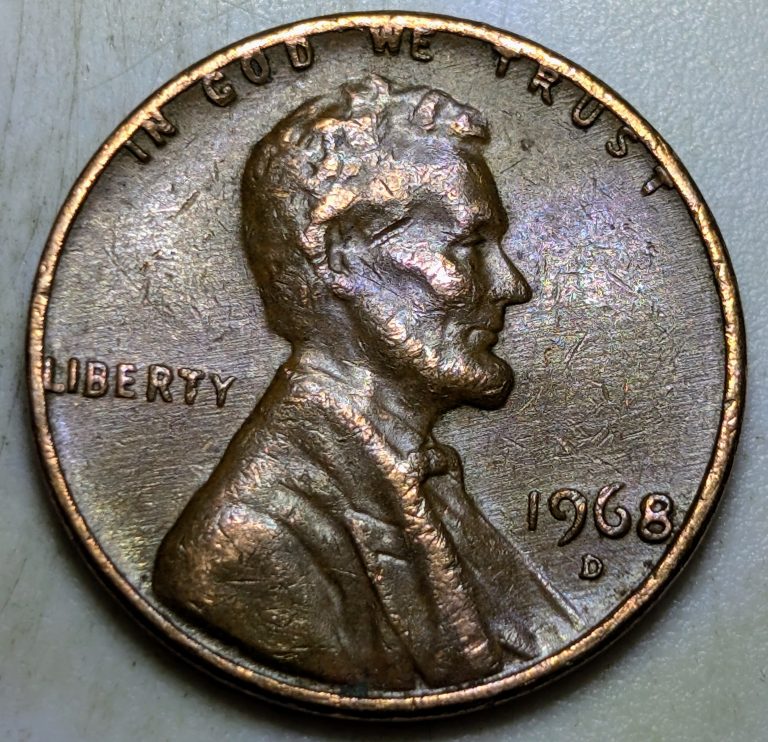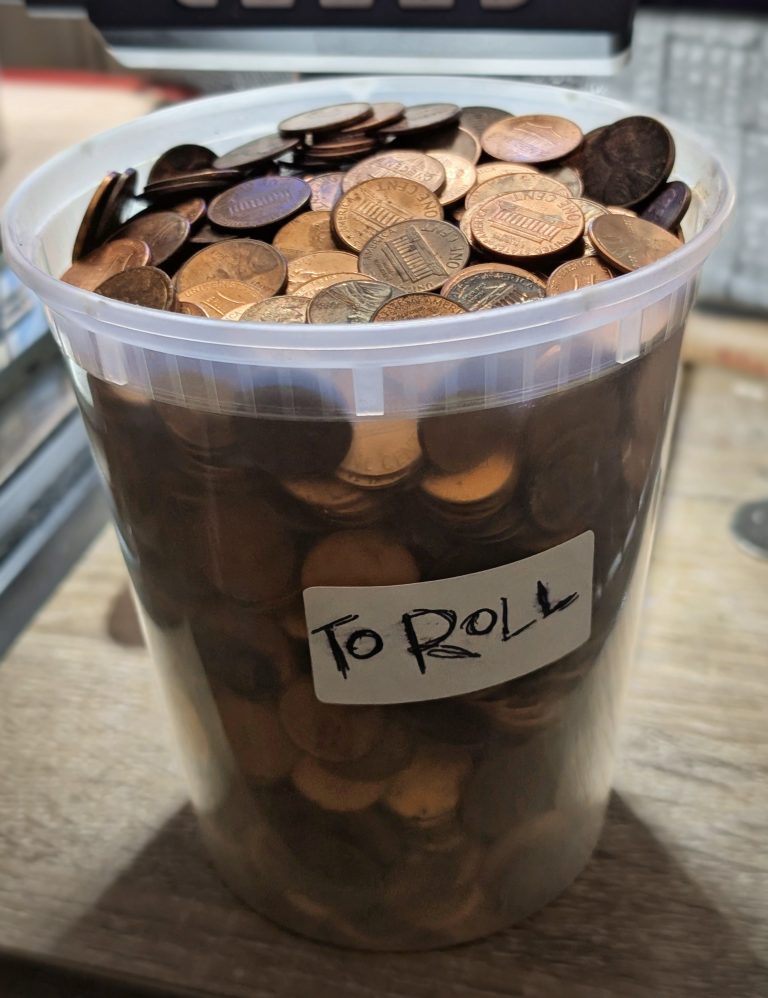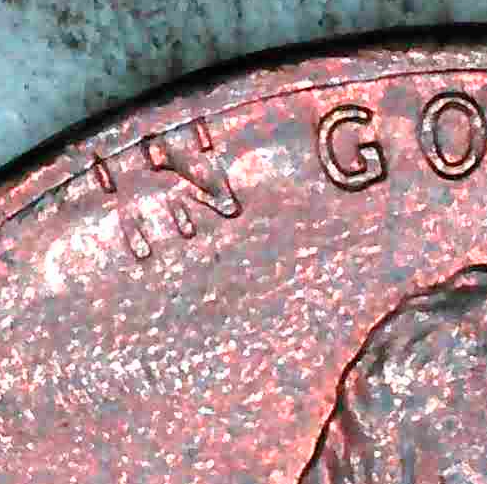Grease-Filled Dies: Cool, Common, and Usually Worth Nothing
If you’ve ever found a coin with faded letters, missing details, or what looks like a weak strike in just one area, you might be looking at a grease-filled die error. These are some of the most common types of mint-made oddities. They can be fun to spot, but they are almost never worth anything.
A grease-filled die error happens when oil, dirt, or other debris clogs part of the die. This prevents the design from fully transferring onto the blank coin during the strike. The result is a coin that looks like it’s missing something. Sometimes it’s just a few letters, sometimes whole words vanish from the surface.
These coins are legitimate mint errors, but because they happen so frequently and usually aren’t dramatic, they rarely have much value. Still, they’re worth knowing about. If you go through rolls or bulk lots, it’s helpful to understand the difference between a grease-filled die and something caused by wear or damage. That knowledge will keep you from spending too much time or energy chasing a coin that’s only worth a cent.
How to Spot a Grease-Filled Die Error

Grease-filled die error on a Lincoln cent. Note how the letters in “STATES OF” are faint or completely missing, while the rest of the coin shows normal detail. This is a classic sign of a clogged die affecting just one area of the strike.
The easiest way to identify a grease-filled die error is by looking for missing or faint details in just one area of the coin. These spots will often appear flat, smooth, or slightly discolored, but they won’t show the usual signs of wear like scratches or surface damage.
Look at the lettering first. Missing letters or parts of letters (especially in “LIBERTY,” “IN GOD WE TRUST,” or “UNITED STATES”) are common signs. If the rest of the coin is sharp and shows no circulation wear, that’s your clue. A grease-filled die doesn’t affect the whole design evenly. It usually impacts only one part of the coin, wherever the die was clogged.
Another hint is the shape of the missing detail. A worn coin tends to show gradual fading or soft high points across the whole surface. But with a grease fill, the missing area is usually sharp and specific. It might look like someone carefully erased just one section.
If the rest of the coin looks strong and crisp, but one area is mysteriously blank or mushy, it’s probably a grease-filled die. Just keep in mind, they’re common and usually not collectible unless something truly dramatic happened—like an entire word or date vanishing cleanly.
When Is a Grease-Filled Die Worth Money?
In almost every case, it’s not. Grease-filled dies are considered minor errors and usually don’t add any real value. They’re too common, too random, and too inconsistent. Most collectors see them as curiosities rather than collectibles.
That said, there are exceptions. If a grease-filled die causes a dramatic effect (like wiping out an entire date or mintmark) it might catch attention. This is especially true if the rest of the coin is in great condition and the missing detail is unusually clean or symmetrical. These standouts can occasionally sell for a few bucks to collectors who specialize in oddities.
Still, while these errors happen at the Mint, they aren’t the kind that usually qualify as premium collectibles. They’re like typos from a dirty typewriter. Interesting? Sure. Valuable? Not usually.
When Grease-Filled Dies Are Actually Interesting
Most grease-filled errors are low-value, one-off events. But once in a while, a grease-filled die creates a repeating, recognizable variety. That’s when they become more than just a curiosity.
If the same die strikes many coins with the same filled spot (like a missing letter, digit, or detail) that can become a known variety. These are rare cases, but they exist. A famous example is the 1982 No P Roosevelt dime, where a grease-filled die led to the absence of the Philadelphia mintmark on tens of thousands of coins. Because it was a widespread and consistent error, it became collectible.
These exceptions prove that grease-filled dies can matter, but only when the missing element is easy to recognize and appears on a large number of coins. Random filled letters or blurry dates from common years don’t carry the same weight.
In most cases, the difference is scale. A one-off strike with missing detail is just a curiosity. A thousand identical strikes with that same flaw can become a recognized variety worth collecting.
Final Thoughts
Grease-filled die strikes are a cool part of the minting process that help explain why some coins look a little off. They’re not usually valuable, but they offer a hands-on glimpse into how coins are made and where the process can go wrong.
If you’re new to collecting, it’s easy to get excited about a missing letter or faded detail. Just know that most of these are caused by grease and fall into the novelty category. They’re fun to find when coin roll hunting or looking through your change, but rarely worth much unless they’re part of a known variety.
Use them as learning tools. They’ll sharpen your eye, teach you about how coins are struck, and help you understand the difference between true errors, recognized varieties, and normal production quirks. That knowledge will pay off when you come across something that really is worth more than face value.
Geoff runs Genuine Cents, a straight talking coin education project built from hands-on experience and hundreds of hours examining coins. He is an ANA member and writes practical guides for new and returning collectors who want clarity instead of hype. If you want to reach him, message him on Instagram at @GenuineCents.




